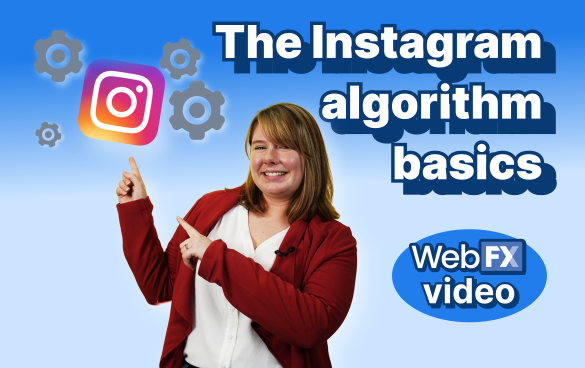- Home
- Blog
- Social Media How the Instagram Algorithm Works (and How To Work With It)
How the Instagram Algorithm Works (and How To Work With It)
-
 8 min. read
8 min. read
-
 Jessica Bonacci
Jessica Bonacci Content Writer
Content Writer
- Jessica is a Google Analytics certified Digital Video Analyst at WebFX. She has created over 100 videos for the WebFX YouTube channel (youtube.com/webfx) in the last two years. Jessica specializes in video marketing and also loves content marketing, SEO, social media marketing, and many other aspects of digital marketing. When she’s not creating videos, Jessica enjoys listening to music, reading, writing, and watching movies.
In this video, Katie from the WebFX Social Media team explains how the Instagram algorithm works and what you can do to see more growth on the platform.
Transcript: The Instagram algorithm isn’t this scary thing that’s out to get you. It’s not something you have to beat or destroy or whatever term you want to use. When you understand how it works, you can create content that’s optimized for it.
And even then, you don’t need a million likes or followers to be successful.
If your business has goals, and you’re consistently hitting them with Instagram, that’s all that matters.
The algorithm we usually talk about, according to the head of Instagram, is not actually one algorithm.
It’s a bunch of algorithms, classifiers, and processes — all part of AI and machine learning — that determine what content appears when you use the app. Plus, Instagram’s features, including Feed, Explore, and Reels, all have their own algorithms.
So when you’re looking to learn how the Instagram algorithm works, consider that a lot happens in the background to show you the content that you see.
When Instagram was first starting out, it had fewer users and significantly less content, so a simple reverse-chronological algorithm worked.
According to Instagram, people missed out on a large portion of posts in their feed as the platform grew. This was all before Instagram transitioned from a little photo-sharing app to a one-stop-shop for entertainment.
Now, the Instagram algorithm uses signals from its users to figure out what’s going to keep you most interested in the platform.
How the Instagram algorithm works
Instagram wants to keep you scrolling on the platform, so they’re going to do what they can to keep you engaged. How Instagram works is that it sort of separates its algorithms into three sections.
There’s Feed and Stories, Explore, and Reels.
Each feature’s algorithm takes a set of signals, which I’ll get to in a moment, and uses them to predict if you’d engage with a post. The posts are ranked using these signals, which determines the order they appear in front of you.
If it’s determined that you would comment, like, or have another interaction with a post, it’ll rank higher and show up closer to the top of your feed.
So if you comment on someone’s posts consistently, there’s a good chance you’ll keep seeing them at the top of your Feed.
On the other side of things, if you scroll past someone’s posts without ever engaging, you might not see them pop up as often. With the Feed and Stories, the key signals — according to Instagram — are:
- Information about the post, such as its popularity, when it was posted, and what type of content it is
- Information about the person who posted, which helps determine if you’d enjoy the content from this specific account
- Your activity, such as how you engage with content on Instagram
- Your history of interacting with someone, which looks at if you comment on a specific account, share posts, or if that person does the same to you
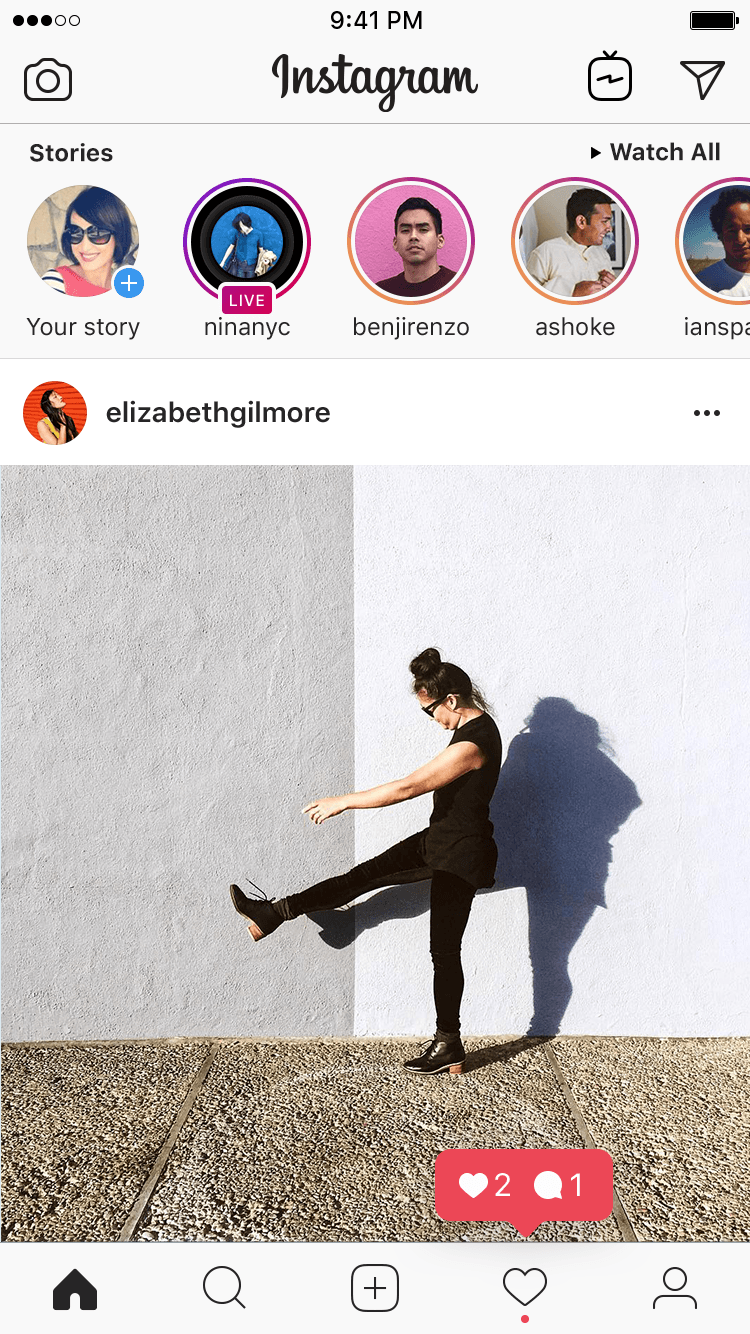
The signals are pretty similar for the Explore feature. The biggest difference is that there’s a good chance you haven’t interacted with the accounts that posted the content before.
The algorithm uses information about the posts you’ve interacted with in the past to help make recommendations for content you might also enjoy. It may also recommend content based on what users similar to you engage with.

As an example, if you follow and like posts from an account dedicated to knitting, you might see some recommended posts in the Explore tab related to knitting.
Instagram can also look at what additional accounts the followers of that knitting account engage with and recommend content that way. The Reels algorithm is, again, similar to the other two I’ve mentioned.
Instagram says the important signals are:
- Your activity, like which Reels you’ve shown interest in
- Your history of interacting with the person who posted, although there’s a chance you’ve never interacted with the creator before
- Information about the reel, such as the audio used and the video’s popularity
- Information about the person who posted, like their popularity
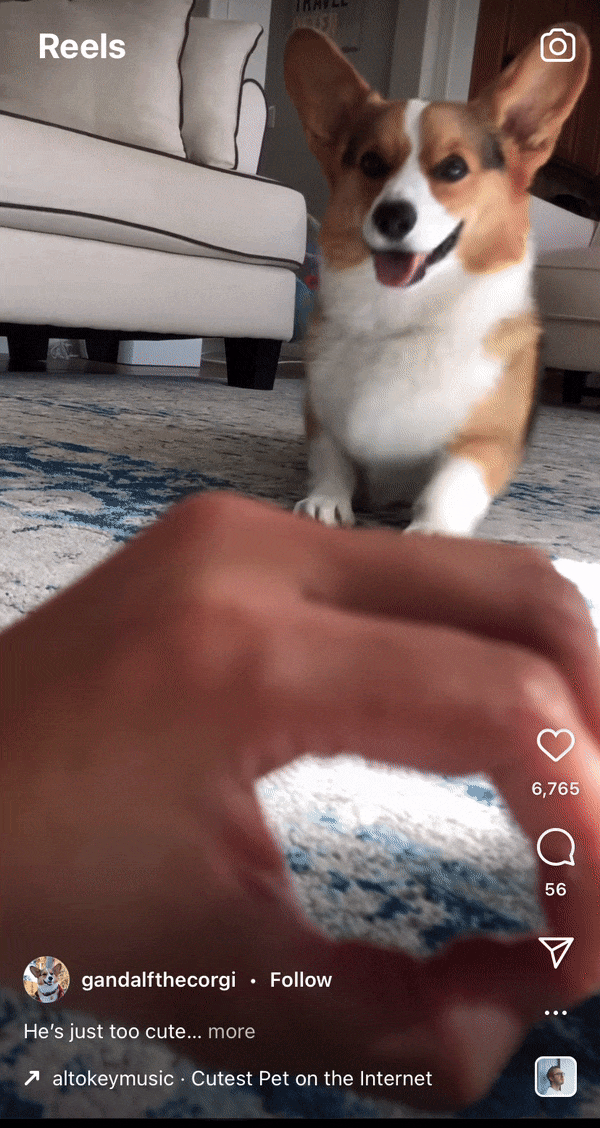
The main thing to keep in mind when you’re using Instagram for your business is that your content should be high-quality and crafted with your audience in mind. Sharing photos or videos that aren’t helpful or aren’t related to your business probably won’t get the results you expect.
Also, keep in mind that the algorithm on Instagram isn’t set in stone. It keeps learning based on how people interact with the platform, and it may change over the years.
Not happy with your social media engagement?
We’ve got just the blog post for you.
Read the Blog Post & Watch the Video
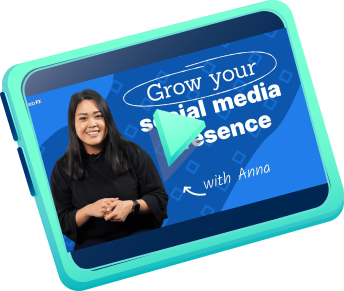
4 tips to help you grow with the Instagram algorithm
1. Establish your account’s purpose
With a personal Instagram account, there’s less pressure to focus on a certain niche or subject area. Post what you enjoy! It’s your life.
When it comes to having a business account, you should take the opposite approach.
It’s best practice to know why you’re on the platform and make sure your audience knows it, too.
Keywords are helpful in this situation.
Using relevant keywords in your name, bio, hashtags, and captions can help tell Instagram what your account and your posts are about, giving you a better chance to appear when people are going through the Explore feature or searching for content.
You might also call this tactic Instagram SEO. Try to share content related to your business, too.
So if you run a shoe repair business, you might want to use keywords related to shoe repair across your account.
It wouldn’t make sense for you to share things about your favorite flowers because they’re completely unrelated to your business.
Save those posts for your personal account.
You can find keywords using tools like KeywordsFX, Keyword Tool, or even a paid platform like Ahrefs.
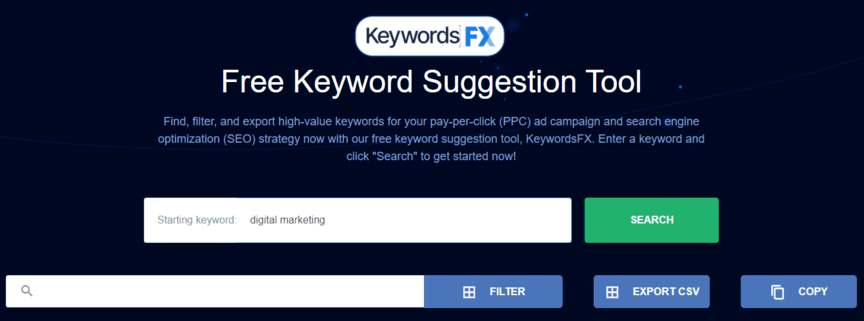
2. Engage with your audience
Interactions play a big part in the Instagram algorithm, so don’t let your account be a one-way street when it comes to communication.
When people comment on your posts, respond with substance. Ask questions. Encourage more conversations when it makes sense.
If people tag you in content related to your business, consider sharing it or at least responding.
You can be proactive and engage with other accounts, too. Leave comments, like posts, and share things if they make sense for you to share them.
Forming relationships with your audience will encourage them to keep liking your posts and looking for your content.
All of this can help you achieve success with the algorithm on Instagram.
3. Use all of Instagram’s features
As the head of Instagram says, it’s not a photo-sharing app anymore. You can post photos, videos, go live to your followers, sell your products and create short form video content. People come to Instagram for their entertainment.
Don’t be afraid to try something new to grab people’s attention.
Try using the Reels feature to reach a new audience. Use live video to do a Q&A session about your business.
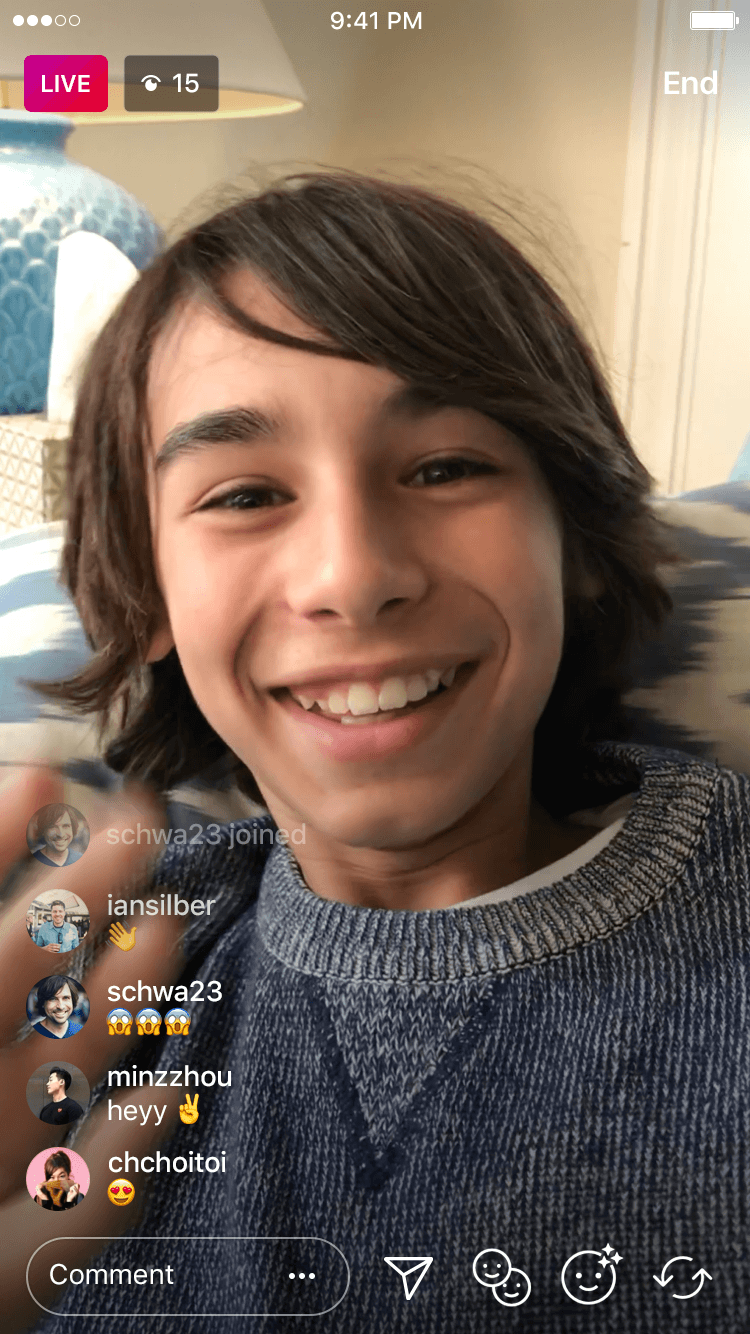
If a new Instagram feature arrives in the future, be an early adopter to get ahead of the crowd.
Instagram gives you the tools to engage your audience. Play around and find what works for your business.
4. Review your account’s analytics
Driving engagement and interactions will help you reach more people, so it’s important that you pay close attention to your posts to see if your audience likes your stuff.
Instagram offers account insights to help you figure out what your audience is responding to.
You can view your overall account metrics through the Professional Dashboard and also go to each of your posts for more specific data.
If you notice some posts get more likes and shares than others, try to figure out what you did in the successful posts.
Bring those insights to your future content and continue reviewing your performance. Learning how the Instagram algorithm works isn’t always the easiest thing, so I hope I’ve done a good job of explaining it.
Again, the algorithm may change and adapt to how users interact with content, so don’t be surprised if things that worked once don’t really do the trick anymore.
Social media marketing is all about adapting to the platforms you use.
If you want to keep learning about social media, we have several other videos dedicated to it.
Take a second to subscribe to our channel, too.
We’d really appreciate it.
We post videos every Monday.
Yup. Every Monday.
Join the 12,000 marketers who get their marketing knowledge from WebFX videos.
Subscribe Now

For an email newsletter packed with digital marketing insights, subscribe to Revenue Weekly using the link in the video description.
Thanks for watching!
-
 Jessica is a Google Analytics certified Digital Video Analyst at WebFX. She has created over 100 videos for the WebFX YouTube channel (youtube.com/webfx) in the last two years. Jessica specializes in video marketing and also loves content marketing, SEO, social media marketing, and many other aspects of digital marketing. When she’s not creating videos, Jessica enjoys listening to music, reading, writing, and watching movies.
Jessica is a Google Analytics certified Digital Video Analyst at WebFX. She has created over 100 videos for the WebFX YouTube channel (youtube.com/webfx) in the last two years. Jessica specializes in video marketing and also loves content marketing, SEO, social media marketing, and many other aspects of digital marketing. When she’s not creating videos, Jessica enjoys listening to music, reading, writing, and watching movies. -

WebFX is a full-service marketing agency with 1,100+ client reviews and a 4.9-star rating on Clutch! Find out how our expert team and revenue-accelerating tech can drive results for you! Learn more
Twitter and Facebook Status Generator
Finding engaging social media content for your business can be difficult. Use our tool to quickly find ideas and post directly to your page.
Give Me an Idea

Social Media Cost Calculator
Use our free tool to get a free, instant quote in under 60 seconds.
View Social Media CalculatorTwitter and Facebook Status Generator
Finding engaging social media content for your business can be difficult. Use our tool to quickly find ideas and post directly to your page.
Give Me an Idea

